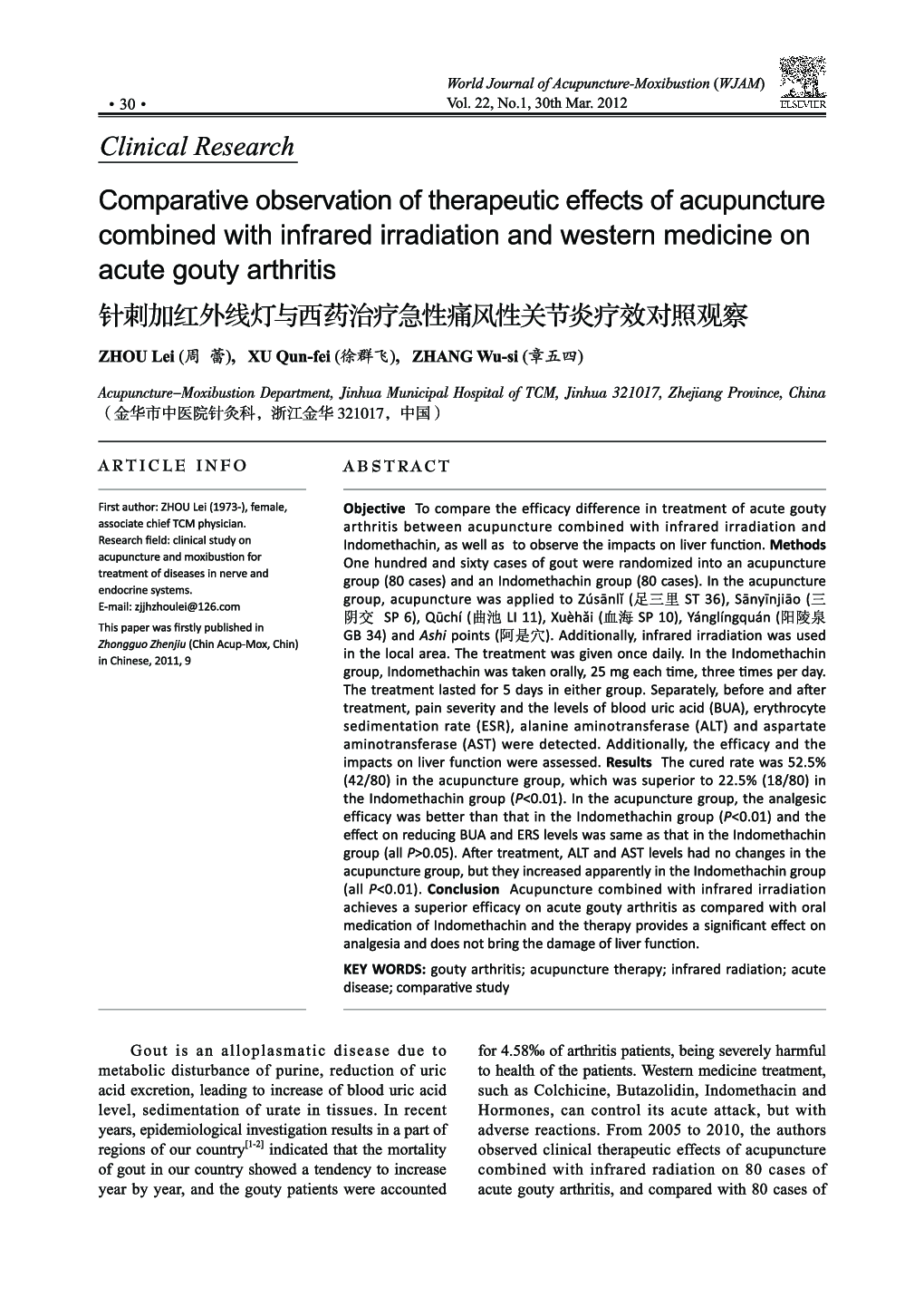| Article ID | Journal | Published Year | Pages | File Type |
|---|---|---|---|---|
| 3103855 | World Journal of Acupuncture - Moxibustion | 2012 | 5 Pages |
ObjectiveTo compare the efficacy difference in treatment of acute gouty arthritis between acupuncture combined with infrared irradiation and Indomethachin, as well as to observe the impacts on liver function.MethodsOne hundred and sixty cases of gout were randomized into an acupuncture group (80 cases) and an Indomethachin group (80 cases). In the acupuncture group, acupuncture was applied to Zúsānl ( ST 36), Sānyīnjiāo ( SP 6), Qūchí ( LI 11), Xuèhi ( SP 10), Yánglíngquán ( GB 34) and Ashi points (). Additionally, infrared irradiation was used in the local area. The treatment was given once daily. In the Indomethachin group, Indomethachin was taken orally, 25 mg each time, three times per day. The treatment lasted for 5 days in either group. Separately, before and after treatment, pain severity and the levels of blood uric acid (BUA), erythrocyte sedimentation rate (ESR), alanine aminotransferase (ALT) and aspartate aminotransferase (AST) were detected. Additionally, the efficacy and the impacts on liver function were assessed.ResultsThe cured rate was 52.5% (42/80) in the acupuncture group, which was superior to 22.5% (18/80) in the Indomethachin group (P<0.01). In the acupuncture group, the analgesic efficacy was better than that in the Indomethachin group (P<0.01) and the effect on reducing BUA and ERS levels was same as that in the Indomethachin group (all P>0.05). After treatment, ALT and AST levels had no changes in the acupuncture group, but they increased apparently in the Indomethachin group (all P<0.01).ConclusionAcupuncture combined with infrared irradiation achieves a superior efficacy on acute gouty arthritis as compared with oral medication of Indomethachin and the therapy provides a significant effect on analgesia and does not bring the damage of liver function.
